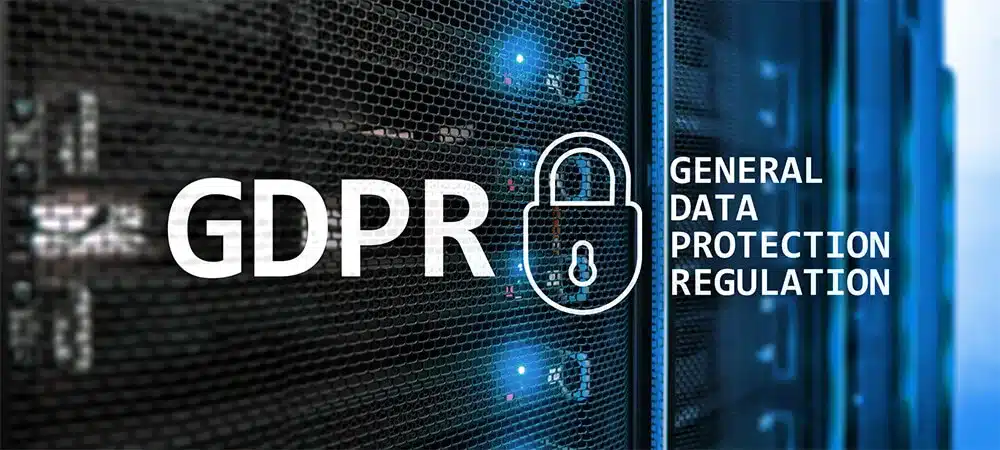The financial services sector underpins the global economy, safeguarding systems and enabling stability. However, as the industry digitizes, cyber threats targeting sensitive data and accounts grow more sophisticated, affecting institutions of all sizes. Threats like ransomware, phishing, and supply chain attacks pose significant risks to banks, credit unions, and financial firms. Amid these challenges, data threat analytics helps monitor, detect, and respond to cybersecurity risks using real-time monitoring and machine learning. This article discusses cybersecurity measures, challenges in finance, and how data threat analytics protects customer trust and ensures business continuity.
The Importance of Cybersecurity in the Financial Sector
In the financial sector, cybersecurity ensures the stability of the global financial system. Financial institutions manage sensitive data, including customer details and transaction histories, making them prime targets for cyberattacks.
Cyberattacks can cause data breaches, fraud, ransomware incidents, and destructive disruptions with severe consequences for the financial sector. These incidents can result in severe financial losses, regulatory fines, and damage to customer trust. For example, DDoS attacks can paralyze financial systems, while ransomware attackers can hold critical data hostage, demanding exorbitant payments.
The rise of advanced persistent threats complicates cybersecurity, with stealthy attacks targeting multiple financial organizations simultaneously. Additionally, the IMF warns systemic cyber risks could disrupt the global economy.
To combat these risks, financial services companies must implement robust cybersecurity measures. This includes using multi-factor authentication, conducting malware analysis, and monitoring network traffic for suspicious activity. Security teams must also prioritize real-time monitoring to detect attack vectors and prevent breaches before they escalate.
Cybersecurity is essential for safeguarding financial systems, ensuring business continuity, and meeting regulatory requirements in the digital era. Moreover, by mitigating risks and strengthening defenses, the financial industry protects customer trust, sensitive data, and its cybersecurity posture.
Understanding the Risks Faced by Financial Institutions

Financial institutions, from large global banks to local credit unions, are entrusted with managing sensitive data, including customer accounts, financial transactions, and personal information. This critical role makes the financial services industry an attractive target for cyber threats.
Cybercriminals exploit various attack vectors, such as phishing attacks, supply chain attacks, and malware, to gain unauthorized access to sensitive information. Insider threats also pose a significant risk, with compromised or negligent employees inadvertently exposing critical data. Systemic cyber risks, as identified by the International Monetary Fund, further underscore the interconnected vulnerabilities within the global financial system. A robust cybersecurity framework is essential to address these risks effectively.
The financial consequences of these threats are severe. Cyber attacks can lead to data breaches, stolen login credentials, and fraudulent transactions, directly impacting business continuity and customer confidence. For financial services firms, the cost of recovering from a major breach includes not only immediate financial losses but also reputational damage and regulatory penalties for failing to meet compliance standards.
Moreover, the rapid pace of digital transformation has expanded the potential attack surface for financial entities. With increased reliance on cloud services and remote work, securing IT infrastructure has become more complex. Financial institutions must now safeguard both their on-premises systems and cloud environments to ensure data protection and operational stability.
To mitigate risks, financial firms should conduct risk assessments, implement access controls, and prioritize employee security awareness. Additionally, understanding challenges and threats in the finance sector is essential for building a resilient foundation for the future.
Cybersecurity Strategies for Financial Institutions
For financial institutions, implementing a robust cybersecurity strategy is essential to mitigate cybersecurity risks and safeguard sensitive data. With evolving threat actors and increasingly sophisticated attack vectors, financial services firms must adopt proactive measures to stay protected.
A comprehensive cybersecurity strategy includes the following critical components:
- Web Application Firewalls and DDoS Protection: These tools block malicious traffic and shield financial systems from DDoS attacks that can disrupt operations and impact business continuity.
- Identity and Access Management (IAM): Ensures that only authorized personnel can access critical systems and sensitive information, reducing the risk of fraudulent activity and insider threats.
- Multi-Factor Authentication (MFA): Adds an extra layer of security by requiring multiple forms of verification for user access.
- Vulnerability Assessment and Penetration Testing: Helps identify potential risks within the IT environment and addresses vulnerabilities before cyber threats can exploit them.
- Data Activity Monitoring and Risk Analytics: Tracks how customer data is accessed and used, providing early warnings of abnormal behavior and possible data breaches.
- Security Awareness and Training Programs: Educates employees on identifying and preventing phishing attacks, strengthening the organization’s first line of defense.
- Regular Risk Assessments: Evaluate the evolving threat landscape and adjust security measures to address emerging threats.
- Proactive Threat Hunting: Combines real-time monitoring with machine learning to identify and neutralize threats before they cause damage.
Implementing these strategies enables financial services organizations to enhance cyber resilience, ensuring the protection of financial data while maintaining regulatory compliance.
By integrating these measures, financial firms can build a secure foundation that supports their operations in an increasingly connected digital landscape. Prioritizing cybersecurity measures not only protects customer trust but also strengthens the broader global financial system.
Threats to the Financial Services Sector

The financial services sector faces a wide array of cybersecurity threats, many of which are specifically designed to exploit the high-value sensitive data and financial systems maintained by financial institutions. Understanding these potential threats is essential for security teams to implement effective defenses.
- Phishing and Social Engineering Attacks: These remain top threats, targeting customer accounts and login credentials through deceptive emails or messages. Such attacks can lead to significant data breaches and fraudulent transactions.
- Ransomware Attacks: Ransomware attackers infiltrate systems, encrypt critical data, and demand payment for decryption keys. These attacks can halt business continuity, resulting in severe financial losses and reputational damage.
- DDoS Attacks: Distributed Denial of Service (DDoS) attacks overwhelm financial systems with malicious traffic, causing service disruptions that impact customers and undermine customer trust.
- Insider Threats: Whether through negligence or malicious intent, insiders pose a risk to sensitive information. Employees with inappropriate access levels can inadvertently or deliberately expose critical business functions.
- API Vulnerabilities: With the rise of digital transformation, financial services companies increasingly rely on APIs for seamless integration. Unsecured APIs create attack vectors that can lead to unauthorized access and data manipulation.
- Advanced Persistent Threats (APTs): These prolonged, targeted attacks focus on infiltrating financial entities to extract valuable data over time, making detection and mitigation challenging.
Addressing these threats requires a proactive approach that includes real-time monitoring, security measures like multi-factor authentication, and regular security assessments to evaluate the organization’s security posture.
By staying vigilant and prioritizing cybersecurity measures, financial firms can mitigate risks, protect their critical systems, and maintain business continuity in an ever-changing digital landscape.
Data Security Measures
To protect sensitive data and ensure integrity, financial institutions must implement strong security measures against external and internal threats.
Essential Practices for Financial Data Protection:
- Encryption: Encrypt data during transmission and storage to secure sensitive information, even during breaches.
- Secure Networks: Use firewalls, intrusion detection, and VPNs to prevent unauthorized access to critical systems.
- Authentication: Implement MFA to ensure only authorized personnel access sensitive systems and data.
- Security Testing: Regular vulnerability assessments and penetration tests identify and address IT infrastructure weaknesses.
- Data Monitoring: Continuously monitor data access to detect unauthorized or unusual activity in real-time.
- Risk Analytics: Analyze data usage patterns to identify and address threats before they escalate.
Implementing these security measures is critical for protecting financial systems from threat actors and maintaining business continuity. In an era of digital transformation, financial services organizations must stay ahead of emerging threats by combining advanced technology with a proactive approach to cybersecurity risks. With the right tools and practices in place, institutions can safeguard their operations and maintain customer trust.
Accountability and Compliance

For financial institutions, regulatory compliance is essential for safeguarding systems and maintaining customer trust, beyond just meeting legal requirements. Moreover, adhering to regulations and cybersecurity standards protects sensitive data and reduces risks of breaches and fraud.
Key compliance measures include adhering to laws and frameworks such as:
- Bank Secrecy Act (BSA): Requires financial institutions to implement measures to detect and prevent money laundering and other financial crimes.
- Dodd-Frank Act: Enforces strict regulations on risk management and financial reporting, ensuring the stability of the financial sector.
- Payment Card Industry Data Security Standard (PCI DSS): Focuses on securing payment data, minimizing vulnerabilities, and preventing data breaches in financial transactions.
By adhering to these compliance standards, financial institutions ensure that their data protection practices align with the expectations of customers, regulators, and stakeholders. This also reduces exposure to regulatory fines and reputational damage stemming from non-compliance or security breaches.
In addition to meeting regulatory requirements, organizations must foster internal accountability through well-defined roles and responsibilities.
Security teams and security leaders must prioritize risk assessments and implement access management to ensure that only authorized personnel can access critical systems. Establishing clear accountability helps mitigate risks and provides a solid foundation for addressing cyber threats in today’s digital landscape.
International Collaboration and Training
In the face of emerging threats, financial institutions must embrace international collaboration and comprehensive cybersecurity training to build resilient defenses. Cyberattacks transcend borders, and effective mitigation often requires a unified global approach. By sharing intelligence and best practices, organizations can stay ahead of threat actors and adapt to evolving challenges in the financial services sector.
Training programs play a critical role in equipping employees and security teams to recognize and respond to potential cyber threats, such as phishing attacks or insider threats. Employees are often the first line of defense, making security awareness initiatives vital for preventing data breaches and maintaining data integrity.
Moreover, ongoing learning is essential for security leaders and technical teams to address systemic cyber risks effectively. Regularly updating cybersecurity strategies and tools ensures that organizations remain adaptable in a rapidly evolving digital revolution. By fostering a culture of learning and collaboration, the financial industry can bolster its collective cyber resilience and protect the stability of the global financial system.
The Role of Data Threat Analytics

In cybersecurity’s evolving landscape, data threat analytics is vital for financial institutions to strengthen defenses. Moreover, it provides real-time insights into threats and vulnerabilities, helping organizations stay ahead of emerging risks.
The financial sector, being a prime target for cyberattacks, benefits immensely from the capabilities of data threat analytics. By analyzing vast amounts of data, financial institutions can identify patterns and anomalies that may indicate potential threats. This proactive approach allows them to take preventive measures, significantly reducing the risk of data breaches and other cyber incidents.
The International Monetary Fund (IMF) underscores the importance of data threat analytics in maintaining the stability of the global financial system. By leveraging this technology, financial services companies can not only enhance their cybersecurity posture but also ensure regulatory compliance. This is crucial for protecting customer data and preventing financial losses due to cyberattacks.
Moreover, data threat analytics plays a pivotal role in improving regulatory compliance. Financial institutions are required to adhere to stringent regulations to safeguard sensitive information. By providing detailed insights into data usage and potential vulnerabilities, data threat analytics helps organizations meet these regulatory requirements effectively.
In summary, data threat analytics is transforming the cybersecurity landscape for financial institutions. Offering real-time insights and enabling proactive measures helps financial services organizations protect their critical assets, maintain customer trust, and ensure the stability of the global financial system.
Implementing Data Threat Analytics
Understanding the significance of data threat analytics in enhancing cybersecurity for financial institutions:
Data threat analytics transforms cybersecurity, enabling financial institutions to detect and mitigate risks proactively with comprehensive analytics. By analyzing data patterns and monitoring network traffic in real time, it helps identify threats before they escalate.
The implementation process includes:
- Analyzing Data for Risks: By examining data usage through advanced techniques like machine learning, data threat analytics identifies unusual behavior that may indicate cyber threats or insider threats.
- Automated Threat Response: Data threat analytics integrates seamlessly with existing cybersecurity measures, automating recovery procedures and enabling security teams to respond swiftly to potential risks.
- Ensuring Compliance: The technology provides insights that help meet regulatory requirements, safeguard sensitive data, and maintain business continuity.
- Integrating Across Systems: By working with both cloud platforms and on-premises systems, data threat analytics provides comprehensive visibility into the entire IT environment.
Implementing data threat analytics equips organizations with a proactive approach to cybersecurity strategy, helping financial services firms mitigate risks, protect customer trust, and stay ahead of emerging threats. This technology is a critical component for maintaining resilience in the digital landscape.
Best Practices for Data Threat Analytics
To maximize data threat analytics, financial institutions should follow these best practices to enhance cybersecurity and protect sensitive data:
- Regular Testing: Perform frequent vulnerability assessments and penetration tests to identify weaknesses and optimize analytics tool configurations.
- Integrate Measures: Combine analytics with encryption, MFA, and access management for a comprehensive security framework.
- Real-Time Monitoring: Use analytics to detect and neutralize threats immediately, ensuring business continuity.
Train Teams: Equip security teams to interpret insights and respond quickly to mitigate risks before escalation. - Compliance Alignment: Leverage analytics to meet regulatory requirements, protecting sensitive data and maintaining customer trust.
By adopting these practices, financial institutions can strengthen IT infrastructure, stay ahead of threats, and secure critical data.With a focus on proactive measures, organizations can strengthen their security posture and ensure the long-term stability of their operations.
The Future of Cybersecurity

The financial services industry is at the forefront of evolving cybersecurity challenges, driven by advancements in technology and increasingly sophisticated threat actors.
The future of cybersecurity will involve addressing emerging threats, such as artificial intelligence (AI) and machine learning-based attacks, which are becoming prevalent tools for cyber attackers. Achieving this will require a focus on enhancing cyber resilience to withstand these evolving cyber threats.
To stay resilient, financial institutions must integrate cutting-edge technologies into their cybersecurity strategies, such as:
- Blockchain for Security: Blockchain can enhance data integrity by providing immutable transaction records, reducing the risk of fraudulent activity and data breaches.
- Cloud Computing for Scalability: Cloud platforms enable rapid scaling of cybersecurity measures, ensuring that financial firms can handle increasing data volumes and threats efficiently.
- AI and Machine Learning: These technologies are vital for detecting anomalies in network traffic and identifying new attack vectors in real time.
- Collaborative Threat Intelligence: International collaboration will continue to be critical for mitigating systemic cyber risks across the global financial system.
As digital transformation continues, the financial sector must adopt a proactive approach to cybersecurity, combining innovative technologies with robust frameworks.
By prioritizing cyber resilience, financial services organizations can safeguard their critical data, maintain business continuity, and build lasting customer trust in the face of future challenges. The integration of emerging technologies with strong foundational practices will be key to ensuring the security and stability of the global economy.
Conclusion
Data threat analytics transforms financial cybersecurity, offering proactive tools to identify and mitigate risks while protecting sensitive data. As threats grow more sophisticated, financial firms must integrate machine learning, real-time monitoring, and cloud computing into cybersecurity strategies. By aligning these tools with regulatory requirements and promoting security awareness, organizations can outpace threats and safeguard systems. The future of cybersecurity combines innovation with vigilance. Adopting data analytics and advanced measures builds a resilient, secure financial sector.

